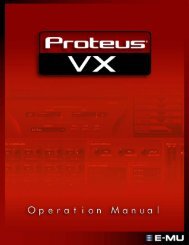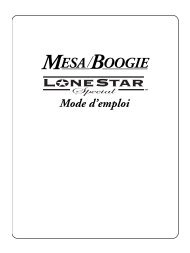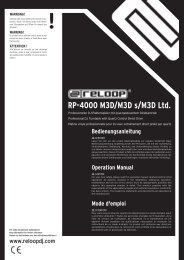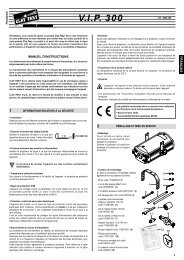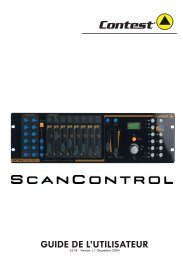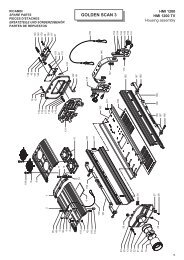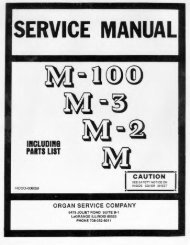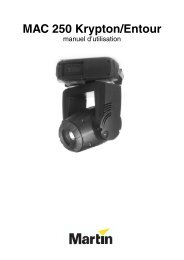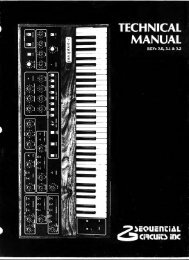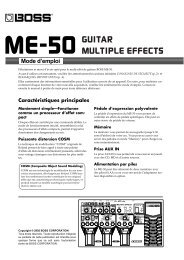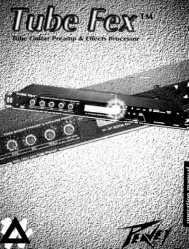Create successful ePaper yourself
Turn your PDF publications into a flip-book with our unique Google optimized e-Paper software.
The Algorithms and their ParametersSplit Chamber Adjustments Page 1RTIM sets the reverb time for mid-frequency signals. Because low-frequencyreverb time (BASS) is a multiplier of RTIM, RTIM acts as a master control for thereverb time.RTIM (Mid-FrequencyReverb Time)SIZE sets the rate of buildup of diffusion after the initial period (which is controlledby DIFF). It also acts as a master control for RTIM and SPRD. The SIZE controlchanges a reverb sound from very large to very small. Generally, you should setthe SIZE control to approximate the size of the acoustic space you are trying tocreate, before adjusting anything else. The size in meters is roughly equal to thelongest dimension of the space. Moving SIZE while a signal is present maycause audible transients on critical material.SIZEThe apparent size of the space created is actually a combination of the settingsof the SIZE, SHAP, and SPRD controls. Small acoustic spaces are characterizedby a rapid buildup of diffusion. However, both small and large spacesfrequently have an uneven buildup of initial reverberation. This uneven buildupis controlled by the SPRD and SHAP controls.PDLY adjusts an additional time delay between the input of signal and the onsetof reverberation. The control is not intended to mimic the time delays in naturalspaces. In real rooms the build-up of reverberation is gradual, and the initial timegap is usually relatively short. Natural spaces are best emulated by setting SHAPat a middle value and adjusting SPRD for the desired effective pre-delay.PDLY (Pre-Delay)Additional delay added with the PDLY control can increase the initial time gapslightly, emulating a situation where reverberant pick-up microphones arelocated much further from the source than the main microphones. If less thanabout 30ms of pre-delay is added, this additional delay can add clarity with somemusic, but it can also sound unnatural. Large pre-delays can be useful for slapechoeffects.TDCY sets the frequency above which sounds decay at a progressively fasterrate. It filters all the sound except the pre-echoes. When set relatively low, it givesa darker tone to the reverberation, simulating the effect of air absorption in a realhall. TDCY also helps keep the ambience generated by the program frommuddying the direct sound.TDCY (Treble Decay)SHAP and SPRD work together to control the overall ambience of the reverberationcreated by the 300. SHAP determines the contour of the reverberationenvelope. With SHAP all the way down, reverberation builds explosively, anddecays quickly.SHAP (Shape)As SHAP is advanced, reverberation builds up more slowly and sustains for thetime set by SPRD. With SHAP in the middle, the buildup and sustain of thereverberation envelope emulates a large concert hall (assuming that SPRD is atleast halfway up, and that SIZE is suitably large—30 meters or larger.)4-27


